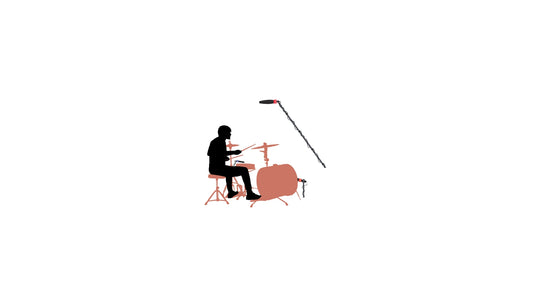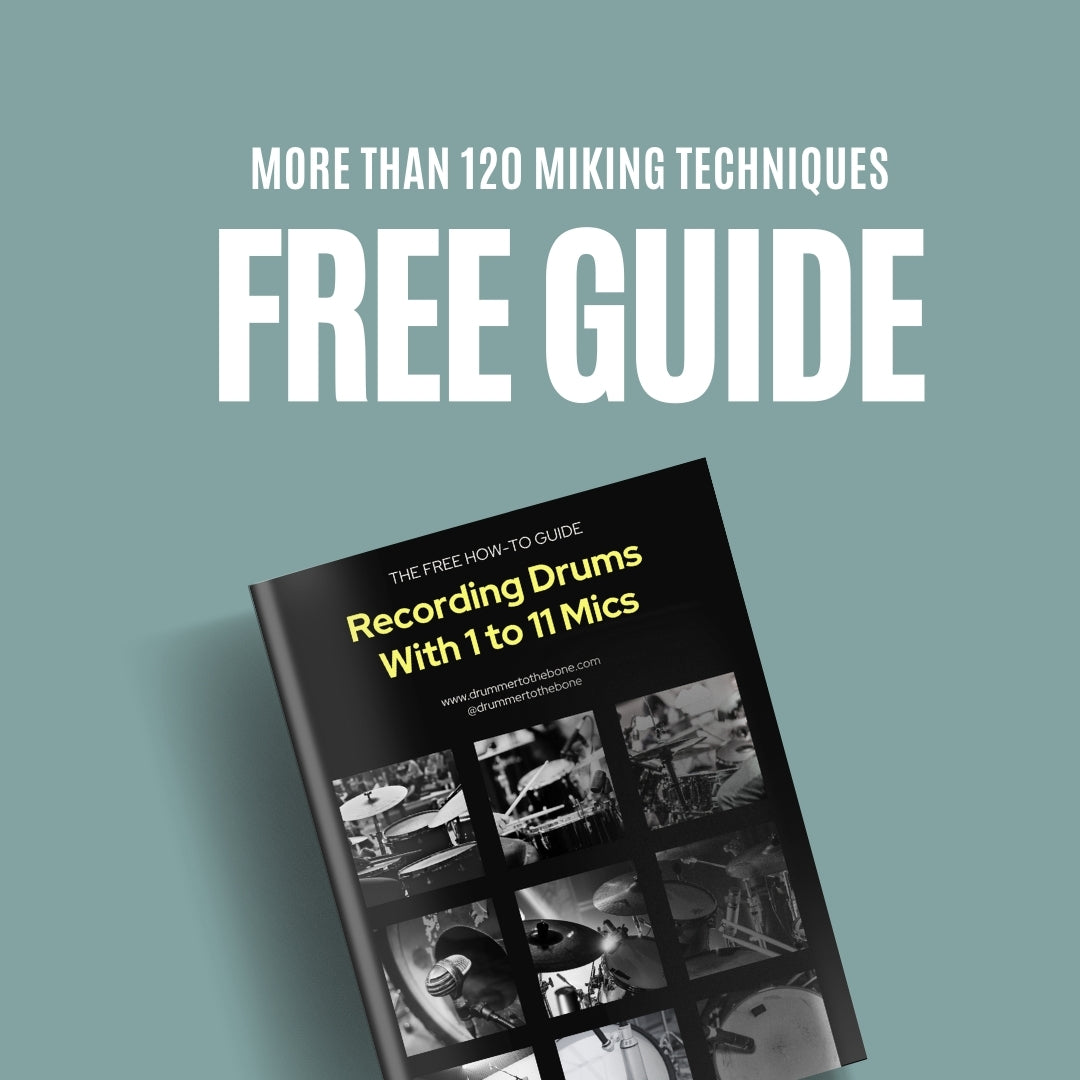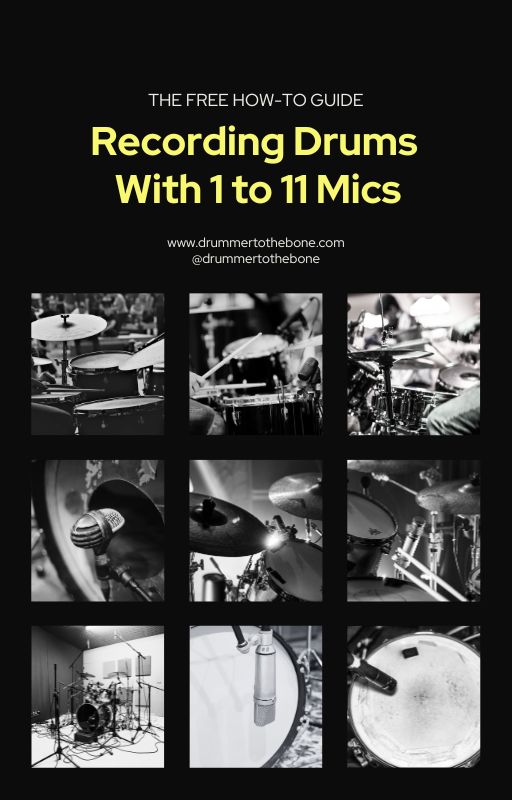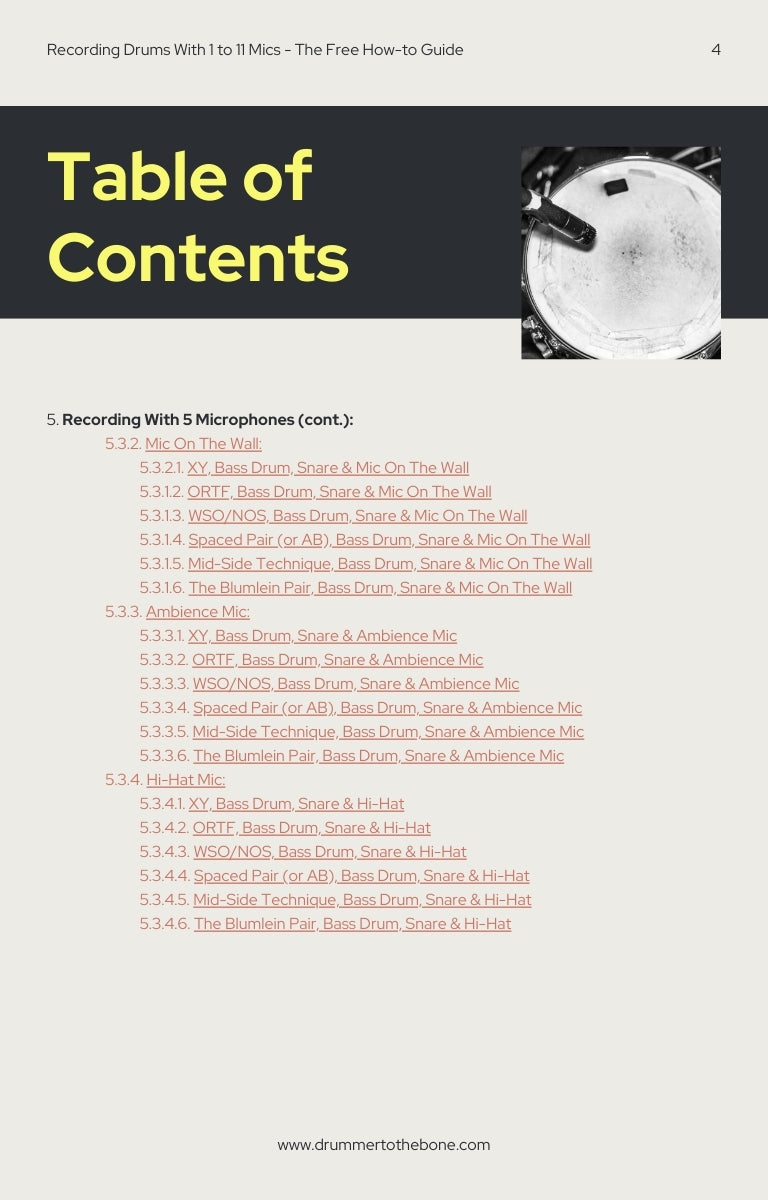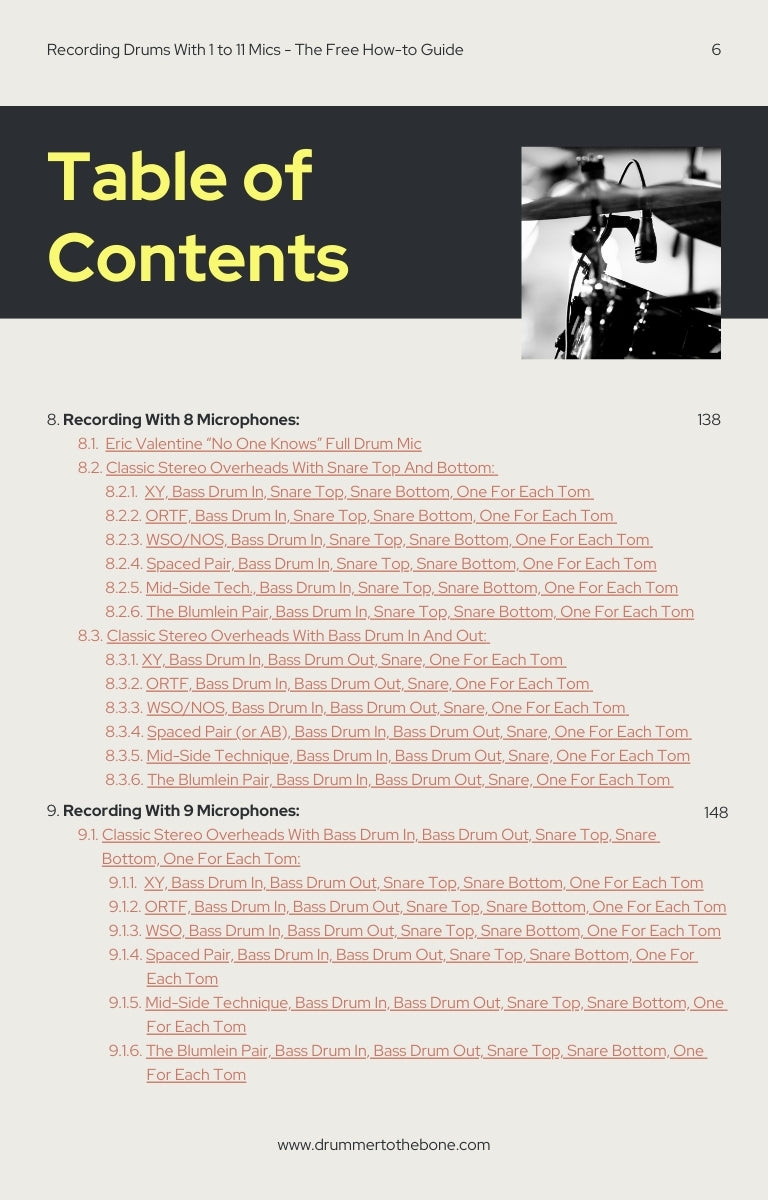This approach takes Eric Valentine “No One Knows” full room described in another post, but adds an extra overhead condenser microphone with a cardioid polar pattern pointed at the back of the kit directly over the drummer's head, around 5 to 6 feet off the floor, facing the kit. This mic will pick up a sound closer to what you hear when you play, adding a nice balance to the sound of the other 5 room microphones.
This approach, which we’ll call ‘Full Ambience 6” (since it is an approach comprised of 6 room mics, capturing the drum set from every angle), would then look something like this:

*center mic should be at the same height as the “side” mics. Floor included for perspective.
And here’s the outline:
- Set up Eric Valentine “No One Knows” full room:
- Place the “sectional” front mics (left, center and right) equidistant from each other.
- Place them around 4 feet off the floor. You don’t want to place them too high, otherwise you’ll lose a lot of low-end.
- Make sure you’re pointing them towards their corresponding section of the drum set.
- Place an ambience mic around 12 feet high (depending on your room), on the left side of the kit.
- Place an ambience mic around 12 feet high (depending on your room), on the right side of the kit.
- Move them around in the room until they both sound balanced between the bass drum and the snare and are roughly equal distances from the snare drum. Make sure there’s a relationship between the height of the left/center/right mics and the ambience mics, in order to ensure phase-coherence. In this case, if the left/center/right mics are at ~4 feet off the floor, then the ceiling ambience mic is at ~12 feet, which maintains the 3:1 rule.
- Place a 6th mic pointed at the back of the kit directly over the drummer’s head approximately 5 to 6 feet off the floor (you can go lower, like right above your head).
Pros of this technique:
- A holistic sound of the drums, with great stereo image possibilities with the left & right mics, with a centered mono signal with the center-front and back mic.
- If your drums sing, this approach will sing too.
- You’ll get full advantage of your drum room sound.
Cons:
- You depend a lot on the room. Dry room, dry sound.
- Your bass drum might still sound a bit dry, so be mindful of that when you EQ this mix.
- Like the Glyn Johns method, your balance determines the final sound. This approach by itself can be very unforgiving.



